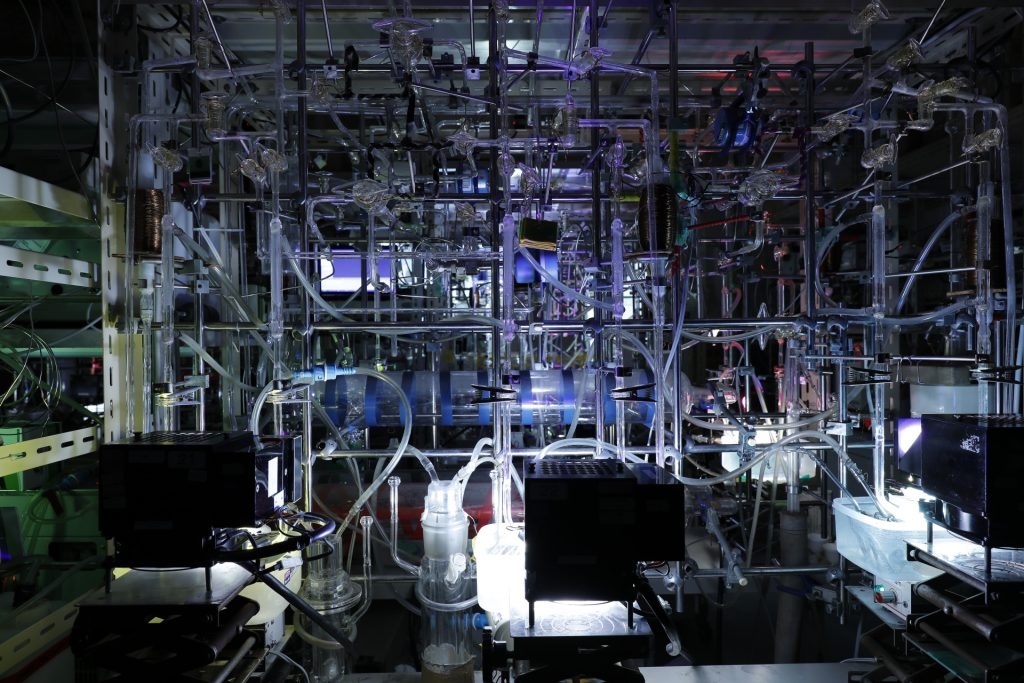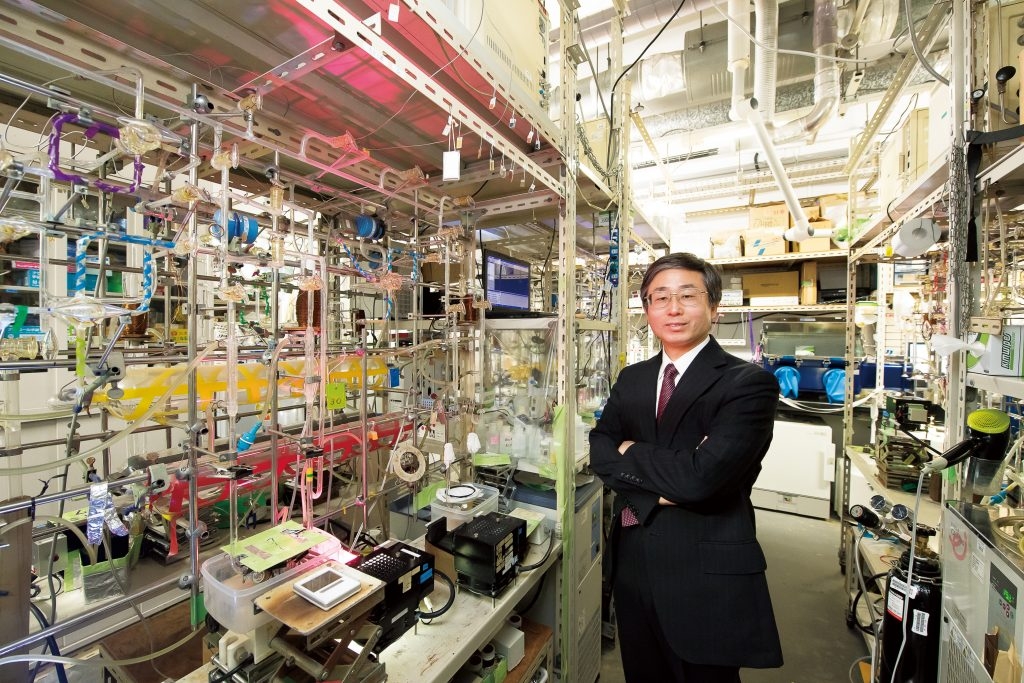In recent years, society has grappled with the problems of energy depletion and environmental destruction. It is in this context that the Kudo Laboratory in the Faculty of Science Division I Department of Applied Chemistry has been attracting attention for its research into hydrogen production using solar-powered artificial photosynthesis.
Currently, the world relies on fossil fuels as its primary natural energy resource. However, fossil fuels emit large amounts of carbon dioxide when they are converted into energy, thereby accelerating the rate of environmental destruction. They are also a nonrenewable resources. Thus, research into clean, alternative energy is being urgently pursued worldwide.

The Kudo Laboratory is developing a method which uses solar energy and water to generate hydrogen.
Hydrogen is fundamental to a wide array of items in our daily lives. For example, the chemical fertilizers spread over the fields which grow our food contain ammonia. This ammonia is made up of hydrogen and nitrogen. Also, the hydrocarbons in gasoline, which makes our cars go, and in olefin, which is an essential ingredient used in the chemical industry, can be created through the chemical reaction of hydrogen with carbon monoxide and, moreover, carbon dioxide. Through these materials, and in many other ways, hydrogen makes our modern, daily lives possible.
To artificially generate hydrogen, a piece of glass coated with photocatalytic particles that will react with solar energy is first submerged in water. When the ultraviolet rays within sunlight come into contact with the photocatalytic particles, it catalyzes a water splitting reaction that released bubbles of oxygen and hydrogen. This methodology is called “solar hydrogen production,” and it is attracting a lot of interest as a promising means of obtaining alternative energy.
Solar hydrogen production does not use up fossil fuels, nor does it emit carbon dioxide. The process itself is also structurally uncomplicated and can be carried out at room temperature and pressure.
By scaling up the size of the production equipment, a new industry and market can be created. For example, it is predicted that the energy industry, materials manufacturers, chemical manufacturers, automakers and others will be able to come up with new applications for the technology that has been developed from this research.
This photocatalytic technology is a uniquely Japanese technology developed, from basic to applied research, by research groups to which the Kudo Laboratory belongs. Given that it is an alternative energy with manageable running costs, it is also expected to contribute to major, rapid innovations in Japanese science and technology.
Being an island nation which is surrounded by ocean and has numerous mountains running down its center, Japan has an abundant supply of water. This clean and easily accessible resource can, if capitalized upon, help us to create a green society.
It is clean energy produced from water and sunlight, and it is likely the indispensable energy of the future that we need to protect our world.

■ Main research content